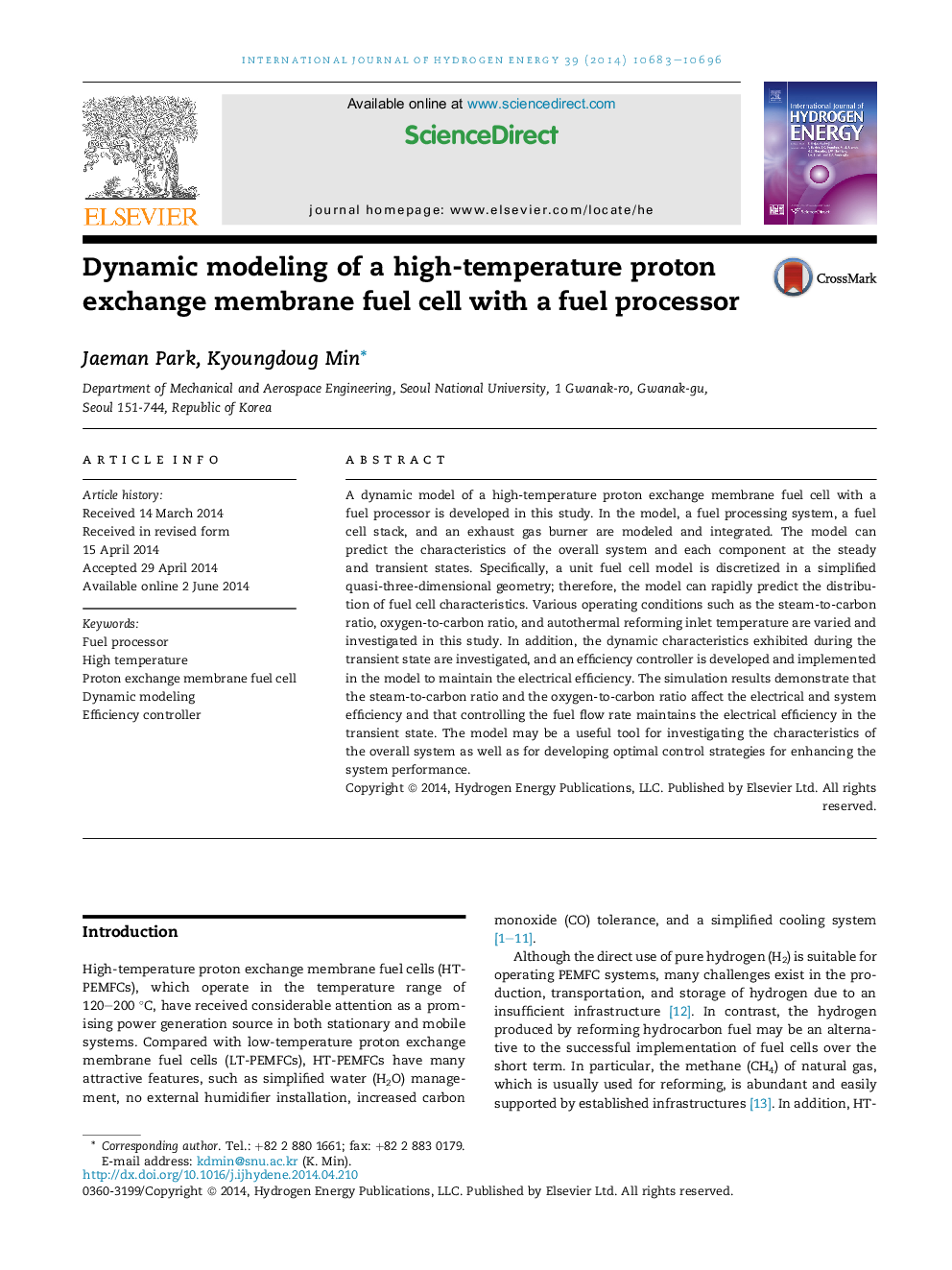| Article ID | Journal | Published Year | Pages | File Type |
|---|---|---|---|---|
| 1276193 | International Journal of Hydrogen Energy | 2014 | 14 Pages |
•The model can predict detailed dynamic characteristics of the system.•Operating condition of the fuel processor affects the overall system efficiency.•Electrical efficiency is maintained during transients by efficiency controller.
A dynamic model of a high-temperature proton exchange membrane fuel cell with a fuel processor is developed in this study. In the model, a fuel processing system, a fuel cell stack, and an exhaust gas burner are modeled and integrated. The model can predict the characteristics of the overall system and each component at the steady and transient states. Specifically, a unit fuel cell model is discretized in a simplified quasi-three-dimensional geometry; therefore, the model can rapidly predict the distribution of fuel cell characteristics. Various operating conditions such as the steam-to-carbon ratio, oxygen-to-carbon ratio, and autothermal reforming inlet temperature are varied and investigated in this study. In addition, the dynamic characteristics exhibited during the transient state are investigated, and an efficiency controller is developed and implemented in the model to maintain the electrical efficiency. The simulation results demonstrate that the steam-to-carbon ratio and the oxygen-to-carbon ratio affect the electrical and system efficiency and that controlling the fuel flow rate maintains the electrical efficiency in the transient state. The model may be a useful tool for investigating the characteristics of the overall system as well as for developing optimal control strategies for enhancing the system performance.
